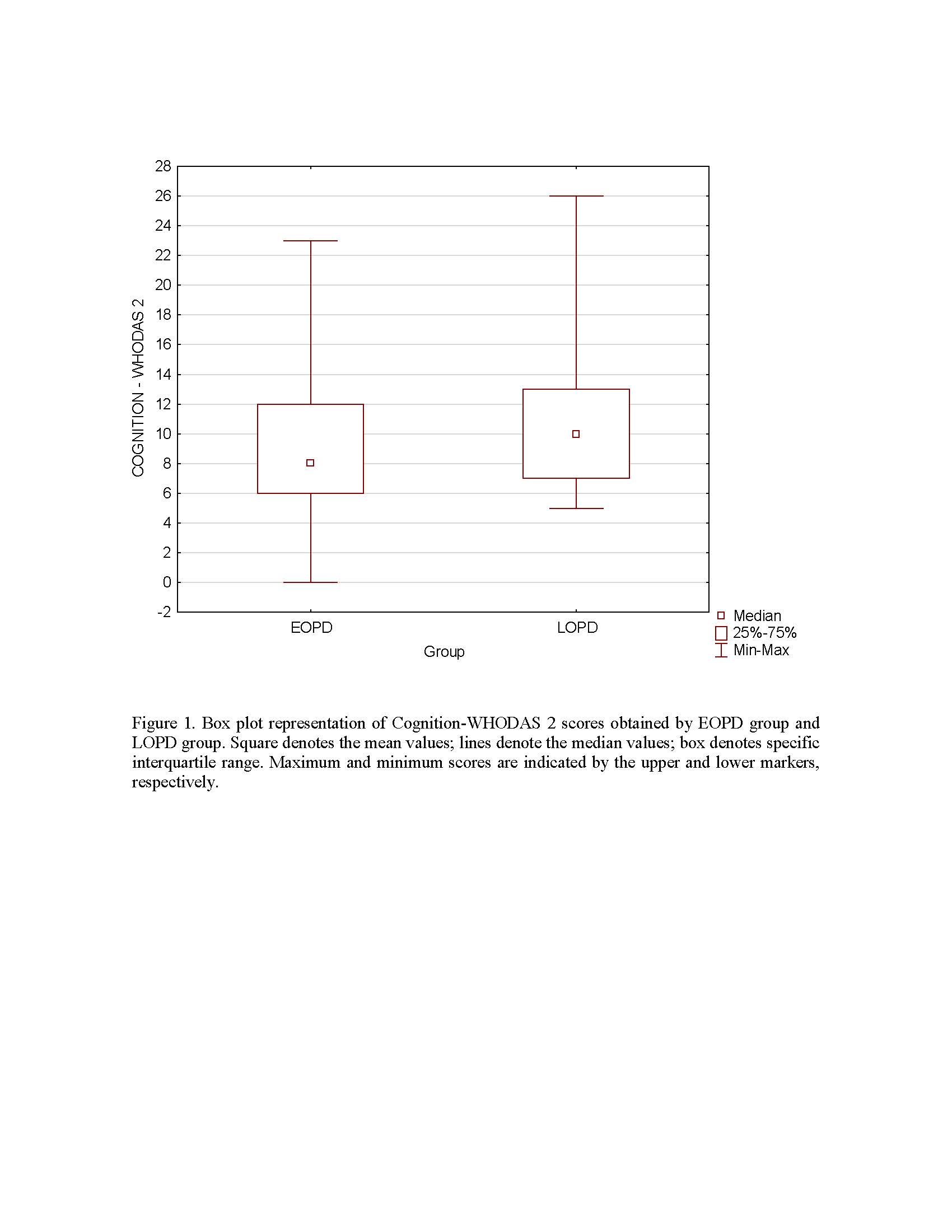Category: Parkinson's Disease: Cognitive functions
Objective: To compare disability levels according to WHODAS-2 between people living with EOPD and people living with LOPD.
Background: Although Parkinson’s disease (PD) is more frequent after sixty decades of life, early onset is possible. Because of the effect of PD symptoms earlier in life, the interaction of symptoms with potentially more active roles in society, and the longer time-life living with the disease, people with early onset PD (EOPD) may face more challenges than those with late-onset PD (LOPD). The World Health Organization Disability Assessment Schedule 2.0 (WHODAS-2) was developed to assess disability based on the biopsychosocial model of the International Classification of Functionality (ICF).
Method: A cross-sectional study of 95 EOPD people (mean age 44.51±4.63) and 255 LOPD people (mean age 63.01±7.99) were recruited for this study, totaling 350 people with idiopathic PD. Demographic information and clinical characteristics, cognitive evaluation by Telephone-Montreal Cognitive Assessment (T-MoCA), self-evaluation of functionality by WHODAS-2 and the Unified Parkinson’s Disease Rating Scale (MDS-UPDRS Part I and II) were documented for each patient by an individual remote interview.
Results: There was a significant difference in WHODAS-2, MDS-UPDRS I and II scores between the intermediate disease stage (H&Y 3) and early disease stages (H&Y 1 and 2). Additionally, there was a positive significant correlation between UPDRS I and II and WHODAS-2 scores (R=.61, p-value=.00001 and R=.65, p-value=.00001, respectively). Among the six domains of WHODAS-2, there was a significant difference between EOPD and LOPD for domains cognition (p-value=.009) and ADL related to work/school (p-value=.01). T-MoCA scores were also significantly different between the two groups (p-value=.01), confirming the more impaired cognition capacity in LOPD.
Conclusion: People living with EOPD showed a similar disability level according to WHODAS-2, except for cognition, where people living with LOPD showed high impairment, and activities related to work, where they showed a high level of disability, explained at least in part, for being in the productive cycle of life. WHODAS-2 may be used to complement the information obtained by MDS-UPDRS part I and II, offering a more comprehensive evaluation of the biopsychosocial impact of disease on patient functionality
To cite this abstract in AMA style:
M E. Pimentel Piemonte, K. Costa Nobrega, I. Silva Nascimento, B. Antunes Souza, I. Carneiro Barone, G. Checchio, V. Pereira Ponciano, C. Cerveira Paula, A. Nunes Possani, N. Cardos Penha. Comparison in the disability level according to WHODAS 2 between people living with Early and Late Onset Parkinson’s Disease [abstract]. Mov Disord. 2023; 38 (suppl 1). https://www.mdsabstracts.org/abstract/comparison-in-the-disability-level-according-to-whodas-2-between-people-living-with-early-and-late-onset-parkinsons-disease/. Accessed December 27, 2025.« Back to 2023 International Congress
MDS Abstracts - https://www.mdsabstracts.org/abstract/comparison-in-the-disability-level-according-to-whodas-2-between-people-living-with-early-and-late-onset-parkinsons-disease/

